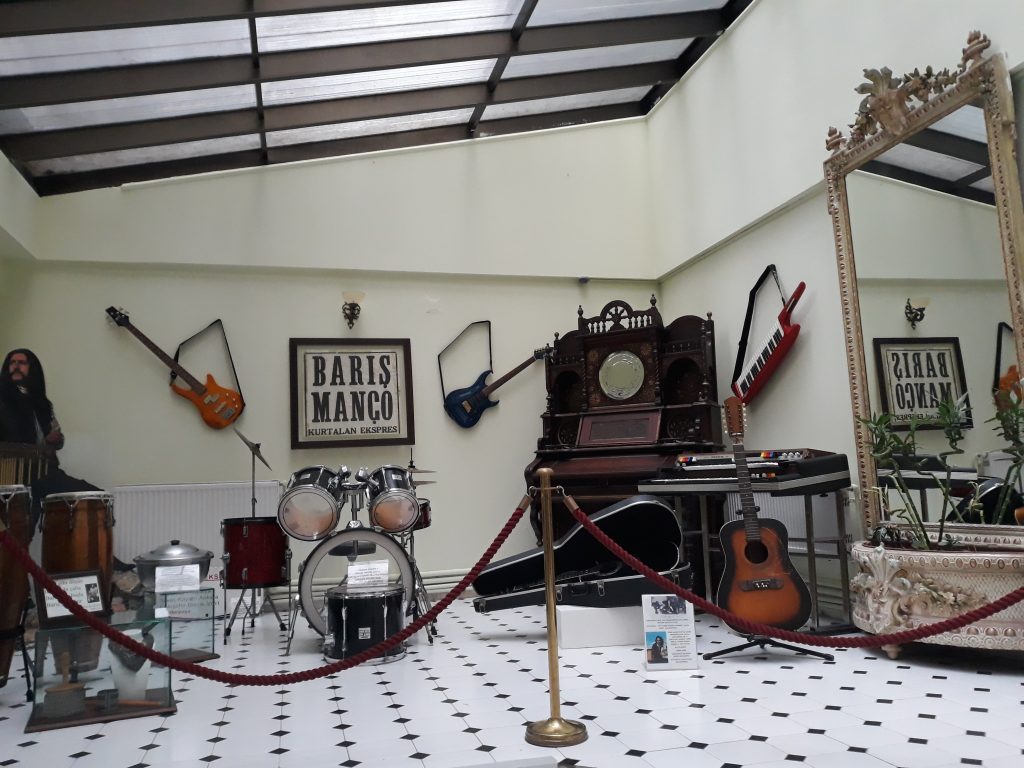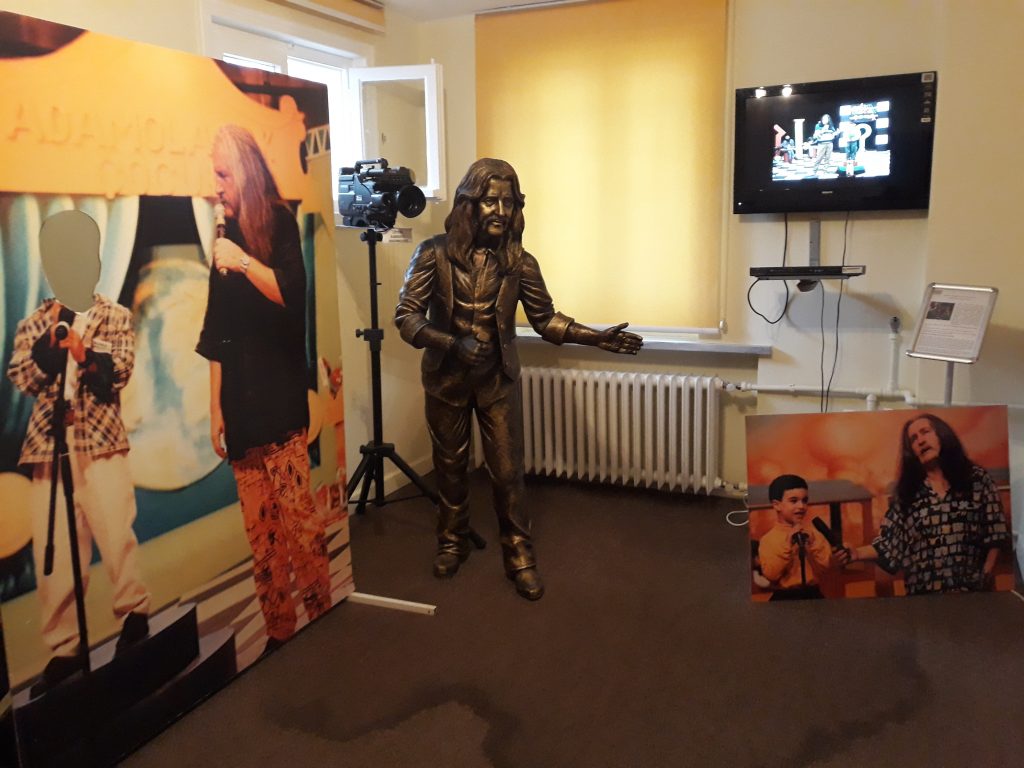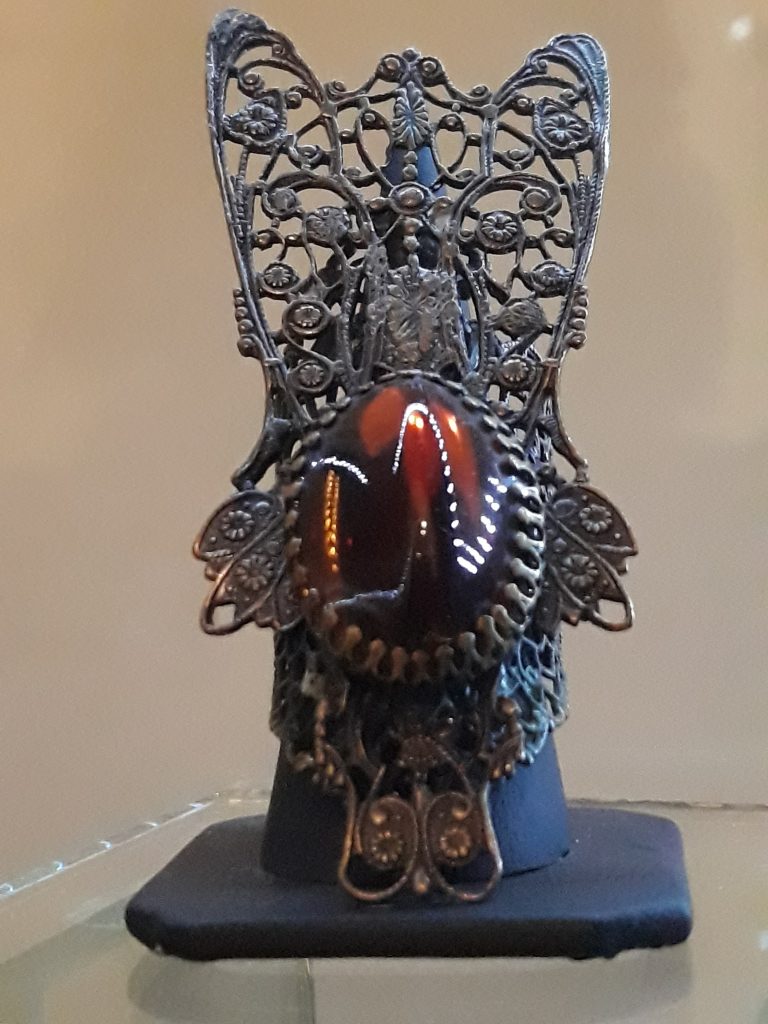When I was about 12, I was bored to tears by rock music. My brother was in a band and practiced for hours. If I wasn’t listening to him pick his way through chord progressions, the walls were shaking to the sound of early raw ACDC. They were known as ‘Acca Dacca’ in Australia, and infamous there decades before the rest of the world heard them play. As a result, although I’d known about Barış Manço since I first visited Turkey, a visit to the Barış Manço museum wasn’t high on my list of places to see.

Barış Manço began playing music in his teens and was one of the founders of Anatolian Rock, a synthesis of Turkish rock and folk music. In 1970 his first hit single sold 700,000 copies and he wrote 200 songs in his lifetime. He seemed very much a stereotypical 1970s rocker, sporting a wispy mustache, skin-tight flares, and long hair. However, after visiting his museum earlier this year, I learned there was much more to his life and career than I’d thought.
The dining room in the Baris Manco MuseumThe museum is housed in his former residence on the Asian side of Istanbul, in the leafy streets of Moda. Just off the entryway is the dining room, decorated with European furniture including a 90kg French bronze chandelier. Cabinets display his collection of highly ornate etched liquor glasses, finished in gold, and other glassware.

Next door the costume room is full of presents and the vibrantly patterned clothes, belts, and accessories he received on his 17 city tour of Japan. These include a Chinese embroidered jacket he donned on his wedding day on 18 July 1978 and the graduation outfit he wore when presented with a Ph.D. from Haceteppe University on 19 June 1982. Unfortunately, the reflection of the glass made it impossible to take useful photographs, but here’s a photo of one of his outfits from 1973 to give you an idea of his rocker persona.
A keyboard staircase leads up to rooms once used by his family. Now they hold mementos of his life and work, including an amazing collection of rings and examples from his time working as a talented graphic artist, musician and TV show host. There are display cases packed with his records and cassettes while the walls are lined with hundreds of tapes of his shows.

However, the most popular room as far as Turkish visitors to the museum are concerned is the former bedroom of Manço’s son Batıkan. This room’s been set up to showcase Barış Manço’s time as a TV host. His programme ‘From 7 to 77’, a music, documentary and chat show, was wildly popular, mainly for the segment called Whizz Kid where he talked directly to children on set. The room includes a statue of Manço and an original camera from the show. It was great to watch nostalgic adults journey back in time to their childhood as they watched episodes from the show and took selfies with the great man himself.
Twenty years ago, on the 31st of December 1999, Barış Manço died. His diary still lies on the desk where he worked, open on that date. In it, one of his children wrote, “Babam öldü. My father is dead. Yet the extraordinary life of this in many ways ordinary unassuming man lives on in his music and images, and of course, in the memories of his legions of fans.
All photos courtesy of the author. For more of Lisa’s writing, check out her blog.









